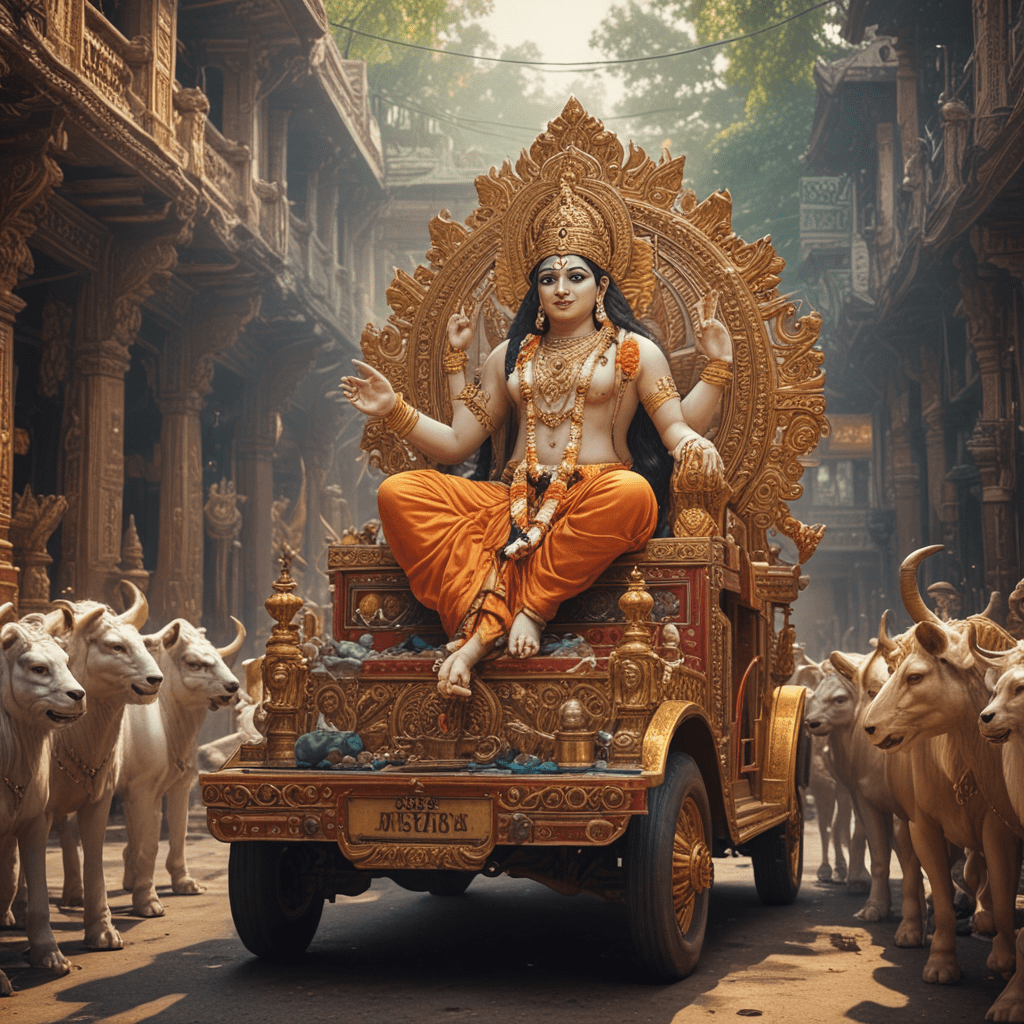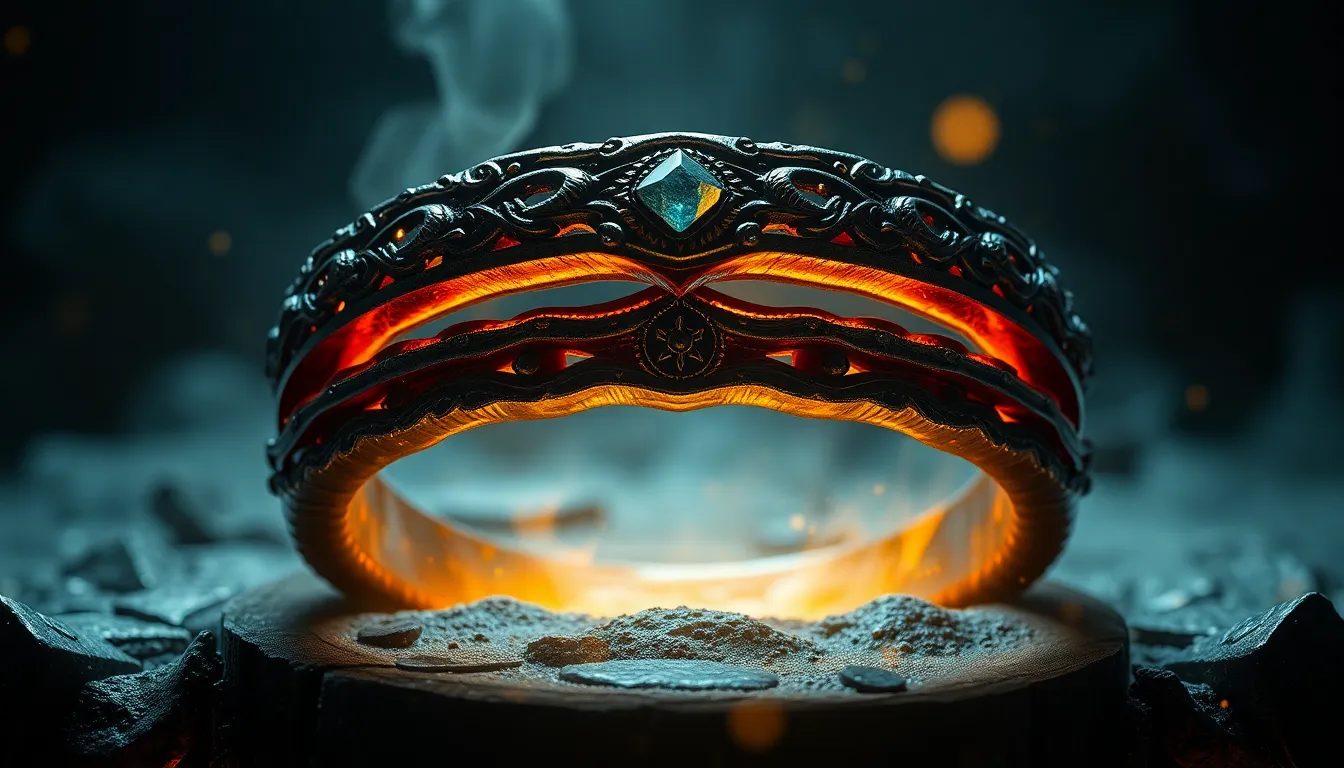10 Mythical Vehicles of Hindu Deities
In the realm of Hindu mythology, deities are often depicted with majestic vehicles that symbolize their power, attributes, and the cosmic forces they represent. These mythical vehicles play a vital role in the adventures and exploits of the gods and goddesses, adding an element of enchantment to the rich tapestry of Hindu folklore. Let's explore the ten most captivating vehicles of Hindu deities:
1. Garuda: The Majestic Eagle
Garuda, the king of birds, is the loyal mount of Lord Vishnu, the supreme preserver within the Hindu trinity. Depicted as a colossal golden eagle with resplendent wings, Garuda is believed to be the embodiment of strength, speed, and vigilance. In Hindu iconography, Garuda is often seen perched atop Vishnu's shoulder, ever-ready to carry out his commands and protect the cosmic order.
2. Nandi: The Sacred Bull
Nandi, the white bull, serves as the devoted vehicle of Lord Shiva, the destroyer and transformer. Nandi embodies tranquility, wisdom, and virility. He is often portrayed as a patient and steadfast companion, gazing intently at Shiva's majestic form. In Hindu temples dedicated to Shiva, Nandi is usually found seated at the entrance, symbolizing the gateway to the divine.
3. Hamsa: The Divine Swan
The hamsa, or sacred swan, is the graceful mount of Goddess Saraswati, the deity of knowledge, music, and the arts. Hamsa is depicted as a celestial swan with pristine white feathers, representing purity, eloquence, and the ability to transcend the mundane. In Hindu mythology, hamsa is believed to dwell in serene lakes of knowledge and is often associated with the power of discrimination, enabling one to distinguish between right and wrong.
4. Makara: The Celestial Sea Creature
Makara, a mythical sea creature, serves as the vehicle of Varuna, the god of the oceans and celestial waters. Makara is often depicted as a hybrid creature, combining the features of an elephant, crocodile, and fish. It symbolizes the vastness, mystery, and unpredictable nature of the cosmic waters. In Hindu art, makara is often seen in association with marine deities, representing the fluidity and primal energy of the oceans.
5. Mayura: The Enchanting Peacock
Mayura, the resplendent peacock, is the mount of Lord Kartikeya, the god of war and general of the celestial armies. Mayura symbolizes beauty, grace, and victory. It is often depicted as a vibrant bird with iridescent tail feathers, adding an element of elegance and exuberance to Kartikeya's aura. In Hindu festivals and celebrations, peacock motifs and designs are commonly used to represent victory, prosperity, and auspiciousness.
6. Mushika: The Intelligent Rat
Mushika, a tiny but intelligent rat, serves as the devoted vehicle of Lord Ganesha, the god of wisdom, new beginnings, and remover of obstacles. Despite his diminutive size, Mushika is known for his exceptional intelligence and loyalty. He symbolizes the ability to overcome challenges through wit and determination. In Hindu iconography, Mushika is often depicted seated beside Ganesha's feet or perched on his shoulder, representing the deity's keen observation and ability to resolve any impediment.
7. Airavata: The White Elephant
Airavata, the magnificent white elephant, is the divine mount of Lord Indra, the king of the gods. Airavata embodies strength, majesty, and supreme authority. It is said to possess four tusks and a resplendent white complexion, symbolizing purity and unwavering determination. In Hindu mythology, Airavata emerged from the cosmic ocean during the churning of the Milky Ocean and was bestowed upon Indra as a reward for his unwavering devotion.
8. Kalki: The Fierce Horse
Kalki, the tenth and final avatar of Lord Vishnu, is associated with a magnificent white horse. Kalki embodies the power of destruction and purification. It is believed that Kalki will appear at the end of the Kali Yuga, the current age of darkness, to restore balance and usher in a new era of righteousness. In Hindu iconography, Kalki is often depicted as a fearless warrior riding a white horse, armed with a blazing sword, ready to vanquish evil and establish justice.
9. Hanuman: The Monkey God
Hanuman, the revered monkey god, is renowned for his unwavering devotion to Lord Rama. Hanuman serves as Rama's loyal companion and trusted ally. He embodies strength, agility, and the ability to overcome any obstacle. In the epic Ramayana, Hanuman is known for his daring exploits, including leaping across the ocean to Lanka and single-handedly defeating the demon army. His vehicle is not a mythical creature but himself, representing his unparalleled powers and unwavering spirit.
10. Pushpaka Vimana: The Legendary Flying Chariot
Pushpaka Vimana, a legendary flying chariot, played a significant role in the Hindu epic Ramayana. It was originally owned by Kubera, the god of wealth, but was stolen by Ravana, the demon king of Lanka. Pushpaka Vimana possessed the extraordinary ability to fly through the air, traverse vast distances, and change its size at will. It became an instrumental tool for Rama and his allies in their quest to rescue Sita from Ravana's clutches, symbolizing the power of technology and divine intervention.
FAQs
Q: Why are mythical vehicles important in Hindu mythology?
A: Mythical vehicles symbolize the power, attributes, and cosmic forces associated with Hindu deities. They add an element of enchantment and help convey the divine qualities and abilities of the gods and goddesses.
Q: Which mythical vehicle is associated with Lord Shiva?
A: Nandi, the sacred white bull, is the devoted vehicle of Lord Shiva.
Q: What does Mushika, the rat, symbolize?
A: Mushika represents intelligence, loyalty, and the ability to overcome obstacles through wit and determination.
Q: Who is the owner of Pushpaka Vimana?
A: Pushpaka Vimana was originally owned by Kubera, the god of wealth, but stolen by Ravana, the demon king of Lanka.




